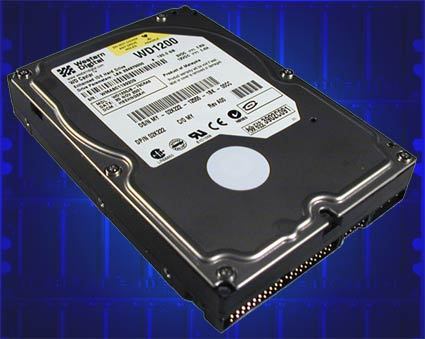Western Digital WD1200JB With 8 MB Cache: Outperforms SCSI Drives
Huge And Fast: Western Digital WD1200JB With 8 MB Cache
Western Digital makes the headlines on a regular basis - in a positive way. Once the company began focusing on high-end IDEs around the end of 1999, it wasn't long until we saw the results: WD was the first manufacturer to offer an IDE drive with 100 GB and 7,200 rpm. Some weeks later, a 120 GB version followed. To increase the performance of these drives even further, the top models (-JB, instead of -BB) are equipped with 8 MB rather than 2 MB cache memory. Will this be enough to compete with the fastest SCSI drives as well?
We already reviewed the 100 GB drive a couple of months ago, and it performed fairly well. Today, Western Digital ships the 120 GB model with 8 MB. Let's see how it compares to other models.
It Doesn't Have To Be UltraATA/133!
Some might criticize that the Western Digital drive is not ATA/133. But the fact is, many people don't really know what to think about ATA/133. Is ATA/100 still fast enough? If it is, then when is the right time to upgrade? Are there any advantages at all? Right now, UltraATA/133 is nothing more than a marketing catchword.
According to Intel and the vast majority of the manufacturers that deal with storage devices and controllers, Ultra ATA/133 might never have been introduced. Rather, everybody is working on Serial-ATA to finally replace the parallel ATA protocol. Unfortunately (or fortunately), Maxtor, strengthened by the acquisition of Quantum, revived Ultra ATA by single-handedly introducing Ultra ATA/133 and convincing several companies to support it. Motherboards with VIA chipsets will soon support ATA/133 by default, and controller cards from HighPoint and Promise are already available. Nonetheless, Intel does not support UltraATA/133 at all, and neither IBM nor Western Digital offer ATA/133 drives - though it would only be a matter of days until the current models could be adapted.
There are several reasons why most companies are impatiently waiting for the successor to ATA. The limited cable length (max. 40 cm) and the rather small bandwidth increase are the two most important ones. When UltraDMA/33 was introduced, it doubled the bandwidth that PIO mode 4 was able to offer. UltraATA/66 doubled the bandwidth again, while UltraATA/100 provided only a 50% boost. The step from ATA/100 to ATA/133 is even smaller (only 33%), showing that the margin for higher bandwidths is pretty small. So, is it all much ado about nothing?
Indeed there's not much that speaks in favor of the new standard. Even the latest hard drives do not deliver more than 50 MB/s, and the limit at 127 GB due to limited addressing possibilities has nothing to to with the interface. Another issue is the limited bandwidth of the PCI bus: at 32 bit and 33 MHz, 133 MB/s are available. As the IDE interface is not the only PCI device, there is usually only 2/3 of this bandwidth left. 64 bit slots or 66 MHz operation are a requirement for any new standard!
Get Tom's Hardware's best news and in-depth reviews, straight to your inbox.
Current page: Huge And Fast: Western Digital WD1200JB With 8 MB Cache
Next Page WD1200JB: What A Trendsetter!
Patrick Schmid was the editor-in-chief for Tom's Hardware from 2005 to 2006. He wrote numerous articles on a wide range of hardware topics, including storage, CPUs, and system builds.
